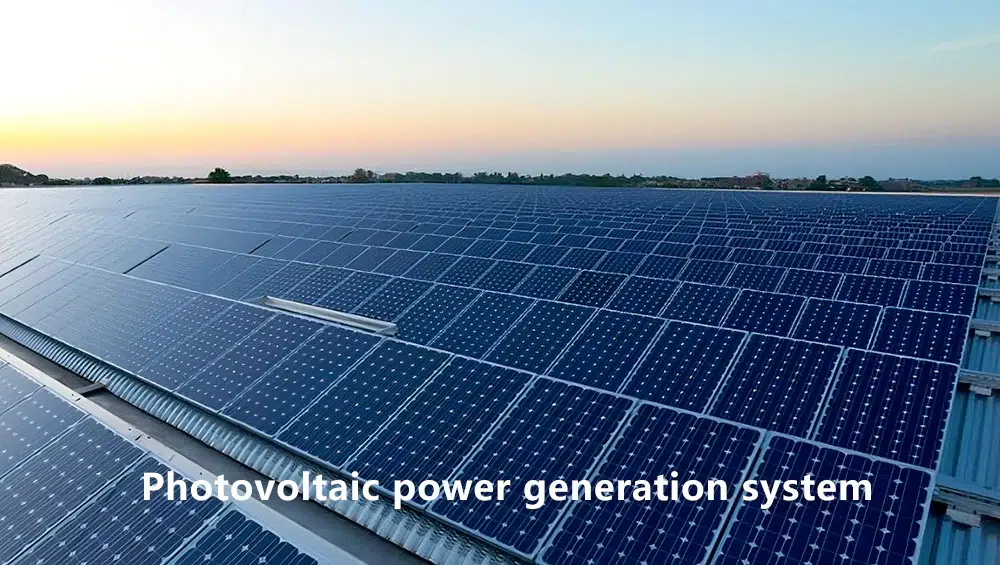The global energy industry is undergoing profound changes from high-carbon to low-carbon, from low-efficiency to high-efficiency. Currently, new energy has become the focus of global energy strategy competition. The new generation of connection technology is playing a key role in new energy industry.
Photovoltaic power generation system

Photovoltaic and wind power generation are two power generation modes that are widely used at this stage. The coordinated and integrated development of photovoltaic + energy storage becomes a hot form of energy development. The source of the entire photovoltaic power generation system is the solar panel system.
The solar panel connection system plays an important role in safely, efficiently and stably transmitting the electric energy converted by the solar panel to the combiner box and inverter, which has extremely high requirements for reliability, service life and resistance to harsh environments.
There is not much difference between the connectors used in it and the photovoltaic energy storage inverter system. It is mainly necessary to ensure a sufficiently high degree of protection (IP68), reliable performance against harsh environments, and to ensure the lowest power on the basis of reducing costs.
Many solar panel systems apply embedded junction boxes to them. Better thermal balance is conducive to reducing resistance, enabling long-term, high-power current output, and long-term stable operation through tuned and strengthened diodes. It can greatly improve the reliability and power output efficiency.
Photovoltaic inverters and energy storage converters are the two core infrastructures for the next stage. These two core infrastructures rely on cables and connectors to bring together the power of a large number of components. If there are hidden dangers in these key components, failure will lead to system shutdown and loss of power generation.
High reliability and high stability are the primary considerations for connecting components in a photovoltaic inverter system. Second, keeping costs low and improving power conversion efficiency is another important connection development direction.
In the future, photovoltaic energy storage inverter systems need inverters with higher frequency, greater power, higher efficiency, smaller size, faster, more accurate and intelligent compatibility with smart grids. To achieve this requires the use of highly reliable, efficient, cost-effective electrical connection components.
International standard MC4 (type MC4) connectors are widely used in the DC terminal connection of the entire photovoltaic inverter system, which has clear requirements for insulation strength, electrical clearance, IP protection level, and safety performance. In particular, the major safety hazard of DC arcing requires the connection components to ensure compatibility in contact.

Wind power system
Corresponding to solar panel power generation, the first system of wind power generation is the pitch system. The safe operation of the pitch system is an important guarantee for the efficient and stable operation of the wind power system.
With the development of wind turbines in the direction of high efficiency and large capacity, more stringent requirements are put forward for the control accuracy, stability, and intelligence of the pitch system, which also puts forward high requirements for internal connection components.
In pitch systems, heavy-duty connectors are widely used for electrical and signal connections. This highly integrated and extremely robust industrial-grade connector has always been known for its reliability in electrical and signal connections. Extremely high current capability and rugged protection can stand up to any severe pitch system.
There is a small component within the pitch system that is critical, the pre-charge resistor for various power applications. Such components require extremely high voltage resistance and can withstand shocks far exceeding the rated power for a short period of time.
At the bus confluence end, the puncture connection scheme aimed at eliminating the combiner box also greatly reduces component jumpers, and the overall cost is also more advantageous.
Conclusion
Reliable safety protection capability is the primary criterion for selecting connection components in the energy industry. In order to ensure the safe and stable long-term operation of the energy generation system, every link of the entire connection system must be foolproof. After meeting the safety and reliability requirements of the energy generation system, the connection components will consider the related requirements such as efficient transmission.










